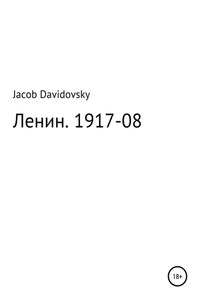This novel is entirely a work of fiction.
The names, characters and incidents portrayed in it, while at times based on
historical events and figures, are the work of the author’s imagination.
The Borough Press
An imprint of HarperCollinsPublishers
1 London Bridge Street
London SE1 9GF
www.harpercollins.co.uk
Published by HarperCollinsPublishers 2017
Robert Lautner asserts the moral right to be identified as the author of this work
A catalogue record for this book is available from the British Library
www.harpercollins.co.uk
First published by HarperCollinsPublishers 2017
Cover design by Claire Ward © HarperCollinsPublishers Ltd 2018
Cover images © Mark Owen/Trevillion Images (figure); www.Shutterstock.com (all other images)
Every effort has been made to trace and contact copyright holders. If there are any inadvertent omissions we apologise to those concerned and will undertake to include suitable acknowledgements in all future editions.
All rights reserved under International and Pan-American Copyright Conventions. By payment of the required fees, you have been granted the non-exclusive, non-transferable right to access and read the text of this e-book on-screen. No part of this text may be reproduced, transmitted, down-loaded, decompiled, reverse engineered, or stored in or introduced into any information storage and retrieval system, in any form or by any means, whether electronic or mechanical, now known or hereinafter invented, without the express written permission of HarperCollins e-books
Source ISBN: 9780008126711
Ebook Edition © January 2017 ISBN: 9780008126735
Version: 2018-01-09
‘It is not so much the kind of person a man is as the kind of situation in which he finds himself that determines how he will act.’
Stanley Milgram, Obedience to Authority: An Experimental View (1974)
Erfurt, Germany,
February 2011
The site had become a squat for the disenfranchised, for anarchic youth. They even formed a cultural group. Artists and rebels. Appropriate. Perhaps.
Over the bridge, across the railway that once moved the iron goods from the factory to the camp at Buchenwald, Erfurt still maintained its tourist heart, its picture-book heart. A place where romance comes. Where carriages drawn by white horses still mingle with trams and buses and young and old marrieds hold hands crossing the market square. Rightly fitting, just so, that the industrial quarter on Sorbenweg ignored, left to rot, to be forgotten. A despised relative a hurt family no longer calls upon. Its only colour in the graffiti, signs and spray-paint portraits that only the youth understood.
The squatters removed, the land and remaining dying buildings reimagined. Erfurt ready to remember that history, no matter its shade, had something to pass on.
Myra Konns ran the morning tours of the museum risen from the ruins of the Topf administration buildings. She guided school-children through the original ISIS drafting tables they had found scattered and vandalised over the years by the transients, guided them through the director’s rooms still furnished with the wide cabinets that once held drafts for cremation ovens. Labels still sitting in their brass handles. The impression of ink soft and leaving. The drawers empty. Yawning only dust and memory. All restored now.
Myra would show them the small canisters with the clay plaques that the factory made to store ashes to be collected by relatives; a legal requirement until someone decided that it was no longer required. Hundreds of them found abandoned and empty in an attic in Buchenwald. These and other smaller items all on the third floor, where the drafting tables were repaired and displayed, where the chief designer’s office had been recreated, where the tours could still see from the window to Ettersberg mountain as the draughtsmen at their tables would have done and Myra would point out that the smoke from the Buchenwald ovens could be seen crawling over the mountain all day. All day.
The oven doors, removed from Auschwitz and Buchenwald, the most sombre items of the tour. No need to highlight the prominence of the company plaque set above them. Topf and Sons exhibited now as the ‘Engineers of the Final Solution’. A brochure saying so.









